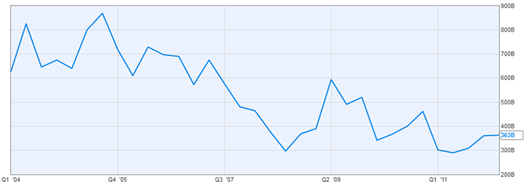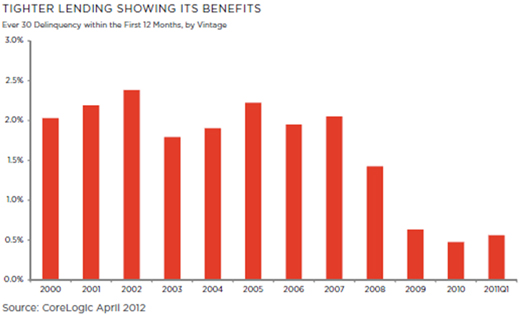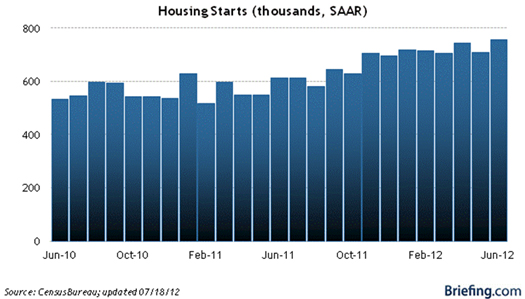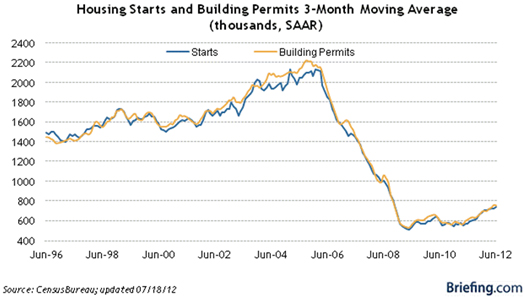Tharp's Thoughts Weekly Newsletter (View On-Line)
-
Article Investor Nostalgia: Friendly Emotions and Influential Biases by D.R. Barton, Jr.
-
-
TradingTip Debriefing on Our First Frog Trading System Boot Camp by Ken Long
Peak Performance 101 and Peak Performance 203 "The Happiness Workshop" with Van Tharp
$700 Discounts Expire Next Week, August 15th
 Investor Nostalgia: Investor Nostalgia:
Friendly Emotions and Influential Biases
by D.R. Barton, Jr.
"Nostalgia isn’t what it used to be."—Peter de Vries, American satirist
In the past week, I’ve had a "perfect storm" of nostalgia wash over me like a wave.
First, we lost a family member when my brother-in-law passed away far too young. We reminisced about him sneaking away to score some pie while the rest of us watched football one Thanksgiving Day, and about what a caring person he was.
Then, a day after the services, I drove to my old hometown to meet three of my closest high school friends. We laughed about the old times, got caught up on all the new things in our lives and had a great weekend together.
Finally, we completed my son Josh’s financial details before he heads off to college in a couple of weeks. He’s not going far away, but the knowledge that he’s the last child of ours to "leave the nest," and that, with this change, my wife and I will be moving into a new stage of our lives, has filled me with bittersweet emotions. I couldn’t be more proud as a dad, and thinking back over the last 18 years has led to both laughter and tears.
I remember a tiny infant of 4 pounds and 10 ounces who was born too soon and whisked from his mother’s arms to the neonatal intensive care unit for almost a week; a baby who didn't walk until he was 17 months old; a boy whose underdeveloped lungs couldn't breathe on their own when he was born, but who nevertheless breathed deeply and calmly two months ago as he stood over a ten-foot birdie putt on the 18th green of the Delaware Blue Hen Conference High School Golf Championship. He drained the putt and won the individual title by three strokes.
The emotions I feel as I write these words are what define nostalgia—that deeply sentimental longing for the past. Which brings us to the reason for today’s article: real estate investor nostalgia for the good old days.
It seems like every time someone sells a house at any price lately, the spin doctors come pouring out of the woodwork to declare that the great real estate recovery is finally underway. And while I think there will be periods of general strength and pockets of hot activity, my research convinces me that it will be many years—perhaps decades—before we fully recover from the worst real estate debacle since the Great Depression. Let’s look at some reasons why.
Our Emotions—Great Companions but Generally Poor Guides
In the same way that I feel positive nostalgic feelings for my high school days or my son’s formative years, real estate investors and real estate professionals long for the decades past, when real estate prices and all other real estate trends could only go up.
Despite the fact that we’ve had an exceptional drop in housing prices throughout the U.S. since the 2006 top, some in the media herald every tick up in data as a great victory. It’s easy to see why almost everyone cheerleads for a housing recovery when we realize what a huge driver new home construction is in the overall economy. The problem is that almost all of the media coverage in the real estate area focuses on people "talking their own book." These people have a vested interest in real estate activity and would benefit from improvements in the market.
But wanting (or even needing) something to happen does not make it so. And while we have seen upticks in sales and prices in recent months and even quarters, they were starting from a very low base. A sustained revival in housing will require several moving parts to come together.
Who Will Buy the New Houses?
In articles last month, I went over the demographic dilemma that the residential real estate market has to overcome. Basically, the 80 million people in the Baby Boomer generation are looking to downsize or cash out of houses that are too big for empty nesters. The problem? There are only 65 million people in the next age-based home buying group—the Generation X gang.
To make matters worse, banks have made it much tougher for almost everyone to get mortgages since the credit crisis that accompanied the bursting of the real estate bubble. Mortgage originations, according to ycharts.com, remain at the low end of the recent range and are running at a level 2.5 times lower than pre-bubble highs:

View Larger Image
As a result of the tougher qualification process for mortgages, we also see banks having fewer problems with newer home buyers. The following chart shows that a smaller percentage of mortgages went delinquent during the first year since banks tightened their mortgage requirements:

This is certainly good from the bankers’ perspective, but it’s not exactly a recipe for fast growth in home sales.
All That Existing Housing Inventory
Unfortunately, there’s yet another huge fly in the ointment. As my third grade economics students learn, to understand any market, you have to know the longer-term demand AND supply. The housing market still has a large supply of existing homes to be used up before new home construction can start in earnest.
"Hold on," you might say. "There are no distressed houses in my area to be bought, and it’s sending prices through the roof!"—and that’s true in many areas where speculation is starting to heat up. But this small revival is being driven by speculators and investors, not first-time or upgrading home owners. The first-time home buyer category dropped to only 32% of all home sales in the most recent monthly report; Briefing.com reports that the average was 45% during more "normal" time periods. With mortgages so hard to get, cash is still king, and speculators with cash are jumping in with both feet at any upward movement in price. Add to this the fact that the U.S. Census Bureau shows that about 5.7% of all houses are vacant and being held off the market (to keep from driving prices further down). You can see why speculators are having a tough time finding houses in some markets despite high levels of vacant inventory on a national basis.
No one can doubt that the real estate market is in better shape now than it was three years ago, but because of both the supply and demand sides, the climb from here is most likely to be slow-going. For perspective, let’s look at some more Census Bureau data, this time on new housing starts. Those talking the most about the housing revival will pull out a chart like this one to show the “impressive” growth that has taken place in recent years:

This is certainly a good start on the road to recovery, but when we look at the housing starts from a longer-term historical standpoint, we get a much different perspective on the recent ramp up. Let’s look at housing starts data for the past 16 years:

While the upturn in new home construction is commendable, within the context of 16 years of data, it is "unimpressive"—modest at best. Housing starts are only a third of their peak levels and only half of the stable levels achieved during the late 1990s and early 2000s.
The Bottom Line
The real estate market has made strides in reestablishing its footing, but the gains made are from very low levels of comparison. The market forces of supply and demand do not yet signal that a full-on revival will arrive in the near term.
What effects will that distant housing recovery have on the markets in the nearer-term? We delve into that topic next week.
If you’ve found this article useful or thought-provoking (or both), I’d love to hear your thoughts and feedback. Just send an email to drbarton “at” vantharp.com. Until next week…
Great Trading, D. R.
About the Author: A passion for the systematic approach to the markets and a lifelong love of teaching and learning have propelled D.R. Barton, Jr. to the top of the investment and trading arena. He is a regularly featured guest on both Report on Business TV and WTOP News Radio in Washington, D.C., and has been a guest on Bloomberg Radio. His articles have appeared on SmartMoney.com and Financial Advisor magazine. You may contact D.R. at "drbarton" at "vantharp.com".
Disclaimer
Trading Education
Workshops
August
24-26
$2,295
|
Peak Performance 101
Learn why some people consistently make profits over and over again while others are erratic and unsuccessful, and how you can be among the successful. |
August
28-30
$3,295
$5,090
(Combo) |
Peak Performance 203 "The Happiness Workshop"
When you understand that you are not your beliefs about the market but instead the awareness of those beliefs, you can really know what the market is doing. It gives you a tremendous edge. |
Sept 8-9
$250 |
Sensory Enlightenment Weekend with an American Buddha
With Stuart Mooney (Only a few seats remain.) |
Sept 21-23 |
Mechanical Systems for Day and Swing by Ken Long
Featuring Highly Profitable Short-Term Systems for Frequent and Profitable Trades!
Learn six strategies in three days. Click here to learn more about these strategies. |
Sept 24-28 |
Discretionary Live Trading by Ken Long
Coaching and demonstration of what to do in preparation for the trading day, trading during market hours, and how to recap the lessons for the day after market close. Learn more... |
October 6-7 |
Oneness Awakening Workshop
Learn ancient meditation practices to help open and balance your mind and spirit. |
October 19-21 |
Peak Performance 101
Van Tharp's Signature Workshop |
October 23-26 |
Peak Performance 202
with Van Tharp and Dr. Libby Adams |
Nov 9-11 |
Forex Trading Systems Presented
by Gabriel Grammatidis |
Nov 13-15 |
New! Great Super Trader Systems
Intraday • Automated Swing • Bear Recovery |
To see our full workshop schedule, including dates, prices and location, click here.
Trading Tip
 Debriefing on Our First Frog Trading System Boot Camp Debriefing on Our First Frog Trading System Boot Camp
by Ken Long
I wanted to share a quick debriefing on the first-ever Frog Trading System Boot Camp (click here to learn more), a three-day workshop held at the Van Tharp Institute in Cary, North Carolina on August 3-5. Both students and staff were very pleased with this first-of-kind workshop for the Institute, and we’re excited to tell you about it.
The Frog is a simple, robust intraday trading system with a positive expectancy. Over the course of the workshop, we taught the 30 traders who attended how to recognize and apply the system’s handful of simple rules. These traders were an eclectic mix from all over the world, with varying degrees of experience and varying objectives for attending. Some just wanted a taste of what day trading is like. Others wanted to diversify the holding periods from their swing and longer-term system. Still others wanted an additional intraday system to trade. But they all shared a common educational focus: learning how to trade the Frog system.
To help them do that, we built a trading simulator and generated 100 sample trades from recorded market data over the last two years in a variety of instruments, featuring both exchange-traded funds and a large-cap stock. These case studies included IWM, SPY, GLD, TLT and AA.
Several weeks prior to the workshop, we distributed the rule set in a collaboration center on the web in order to raise these traders' baseline knowledge. In only the first two hours of the workshop itself, we made mutual introductions, reviewed the rule set, practiced using the trading simulator and started the practice trades. By the third hour, traders were into production mode and comparing their performances against the mechanical trading robot to see if they could master the mechanical rules without error. After executing the mechanical rules over 30 trades, attendees could either continue refining their execution or begin experimenting with sensible rule changes to examine different ways of entering and exiting positions.
We conducted an analysis of each trader’s statistics, System Quality Numbers® (SQN®) and R-multiple histograms in an effort to find evidence of trends and improvement for each individual. We also looked at the result data for the entire room across multiple case studies for evidence of group variations and improvement trends. These analyses helped us provide tailored individual performance suggestions and find interesting applications of optional rules revealed by data.
We learned a number of very significant lessons from the three days of trading:
- The importance of mastering your platform's "buttonology" to reduce errors.
- The challenge of writing clear rules that other traders can understand and implement precisely.
- The importance of using statistics to analyze performance across large data sets. Human memory and intuition based on minimal experience are simply too full of biases to make objective assessments.
- Trading throughout the day takes considerable energy, but practice can improve your capacity.
- The importance of having breaks and snacks during market hours to raise your energy level and maintain your professional focus.
- How to take a professional loss.
- Respecting the R multiple on both the stop-loss side and the profit-target side.
- Using a formal trading log to focus your actions and improve your personal accountability.
- The importance of keeping a reflective learning journal for “a-ha” moments, which are the basis for deeper reflection and adaptive learning.
- How to use the Kolb experiential learning cycle to accelerate individual and group learning curves.
The first iteration of this workshop went very well, and we can see many ways in which traders can apply its lessons in a daily trading practice. Our attendees all enthusiastically approved the experience and are already putting the lessons they learned to work in the markets.
We are now reading through the feedback forms in order to evaluate and apply all of the suggestions we received. We're already looking forward to the next Frog workshop!
About the Author: Ken Long retired from the Army as a Lieutenant Colonel and now teaches at the U.S. Army Staff College. He recently earned a D.M. in Organizational Behavior. He is a proud father of three, a husband, teacher, student, martial artist and active trader. Ken also instructs dynamic trading workshops for the Van Tharp Institute.
Disclaimer
Scratch and Dent Sale
We have a few sets of imperfect or older home study courses on clearance at deep discounts.
$300-$500 off!
Click here for the Scratch and Dent Details
Ask Van...
Everything we do here at the Van Tharp Institute is focused on helping you improve as a trader and investor. Consequently, we love to get your feedback, both positive and negative!
Click here to take our quick, 6-question survey.
Also, send comments or ask Van a question by clicking here.
Back to Top
Contact Us
Email us at [email protected]
The Van Tharp Institute does not support spamming in any way, shape or form. This is a subscription based newsletter.
To change your e-mail Address, click here
To stop your subscription, click on the "unsubscribe" link at the bottom left-hand corner of this email.
How are we doing? Give us your feedback! Click here to take our quick survey.
800-385-4486 * 919-466-0043 * Fax 919-466-0408
SQN® and the System Quality Number® are registered trademarks of the Van Tharp Institute
Back to Top |